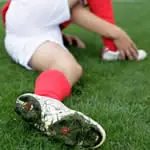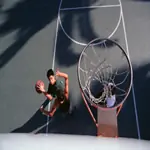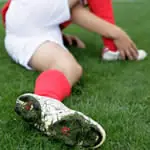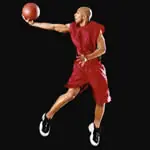As a both basketball coach and student of behavioral science for the last 30 years, I can attest that there is plenty of scientific and philosophical research as well real world testing that can show any player how to perform better "under pressure."
From kids playing AAU summer league games to the NCAA Tournament and the NBA playoffs, someone will take a free throw that will be a factor in their team winning or losing the basketball game. This player may have practiced hundreds of free throws and be considered a good shooter, but none of that matters now. Muscles tighten up, the player tries to breathe and follow a three-bounce ritual. The player tries to focus and concentrate on making the shot. The shot goes up... it's short and to the right. The player missed.
Some will say the player choked. But why does this happen? This player makes lots of free throws in practice all the time! Fortunately this scenario is both predictable and correctable.
Most importantly, our brain is already pre-wired to do this if we allow it to happen. Mastering a physical activity like shooting free throws occurs when the automated subconscious processes of the brain take over. When the shooter attempts to "slow down to focus and concentrate" or control these automated processes, we actually shut down our "autopilot" and engage our "manual" conscious part of the brain, which is poorly equipped to make the shot while "under pressure."
Scientific research shows us not only that we can't consciously access or control the part of our brain that put us "in the zone" and allows for peak performance, but in fact, it is our effort to get there that causes poor performance. If you currently shoot two out 10 (20 percent) from the free-throw line, this article isn't for you. Go practice the fundamentals until you truly own the shot and become at least a 70 percent shooter. However, if you are a good free throw shooter, making a free throw under pressure is as simple as just letting it happen.
Science and Conventional Coaching
A player is fouled and gets ready to go to the free throw line. Coach yells, "slow down and take your time" or "remember to use your legs and follow through." The player steps to the line and the coach says "concentrate" or "focus." However, to have the best chance of making the shot, the player should have a brief "mantra moment" and just shoot.
According to a recent article in Scientific American Mind magazine by Elizabeth Svoboda, the idea that too much self-monitoring hinders performance aligns with the well-established theory of how the brain learns to perform complex motor skills--anything from speaking to typing to shooting a basketball. The part of our brain that is most involved in learning how to shoot a free throw is the cerebral cortex--which controls higher-order, conscious thought and is adaptable to novel situations.
But as we shoot free throws over and over again, we gradually transfer the control of that activity from the cerebral cortex to another area of the brain, the cerebellum, which orchestrates the lightning-fast motor activation needed to perform complex actions. "The cerebral cortex is very good at general-purpose stuff but not at intricately timed things," says Boston University neurologist Frank Guenther. "You want to get the better-equipped part of the brain doing the job for these tasks."
Thus, when people are learning something new (like shooting free throws) they show high levels of activity in the cerebral cortex, whereas when they are, let's say, 80 percent free-throw shooters, they show more activity in the cerebellum.
The wrinkle in this system is that the cerebellum, unlike the cerebral cortex, is not consciously accessible.
As a result, Guenther says, it is when chokers try to check their progress as they are performing that they run into trouble. "Let's say you're trying to play the piano. If you were relying on your motor memory, your motor command would automatically read out the next note in about 50 milliseconds." But consciously monitoring your performance brings this super fast sequence of motor commands to a screeching halt, resulting in a choking incident of epic proportions.
"The feedback from the first note takes 100 milliseconds just to move from your cochlea up to your brain. So if you're saying to yourself, 'Okay, I just finished the C, now I have to go on to the D,' you're going to have problems."
Coaches usually call this "analysis paralysis." The point here is that when you are on the line to shoot the big free throw, stop thinking about the shot, focus on only one simple thing: to quiet your mind and let the cerebellum do it's job and take over.
- 1
- of
- 3







Discuss This Article